#felix e. feist
Explore tagged Tumblr posts
Photo
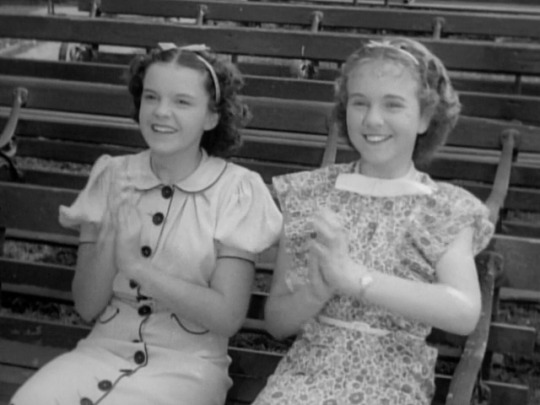
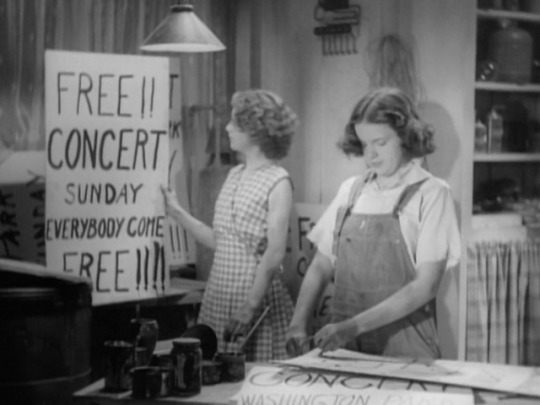
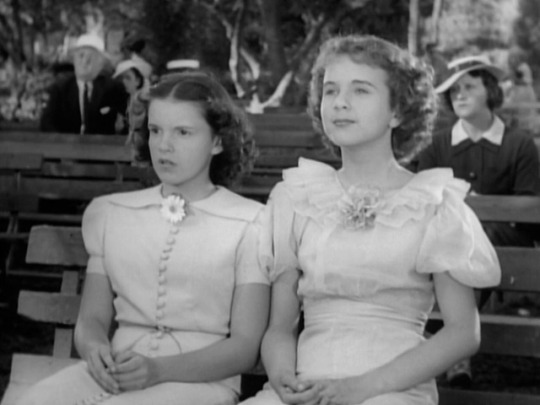
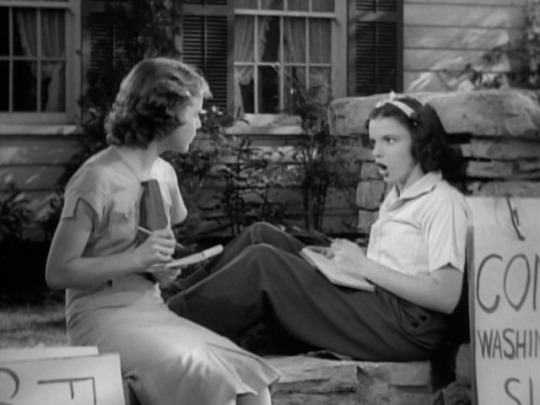
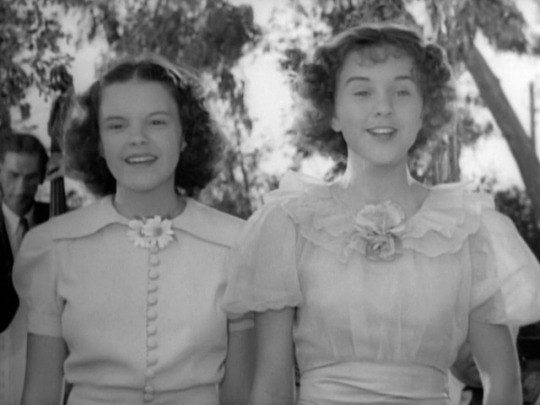
Judy Garland and Deanna Durbin in Every Sunday (Felix E. Feist, 1936)
80 notes
·
View notes
Text
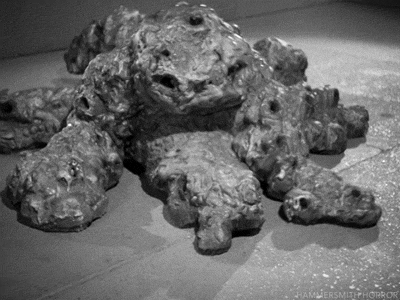
The Outer Limits | S2.E17 | The Probe | 1965
#Felix E. Feist#Peggy Ann Garner#The Outer Limits#monster suit#practical effects#monster#blocked#YOU SHALL NOT PASS#horror#hammersmith horror#love me#touch it
355 notes
·
View notes
Text

Deanna Durbin-Judy Garland "Every sunday" 1936, de Felix E. Feist.
20 notes
·
View notes
Text

This Woman Is Dangerous, US lobby card #3. 1952
8 notes
·
View notes
Text



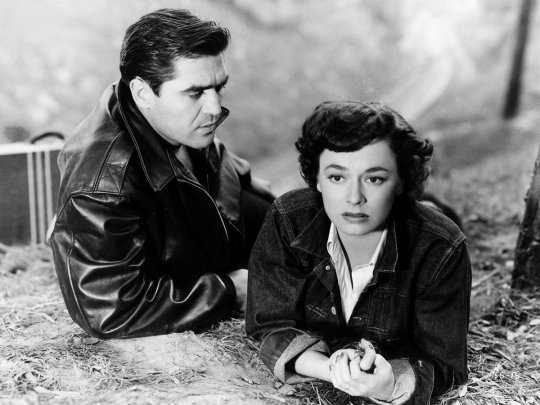

Tomorrow Is Another Day (1951) Felix E. Feist
September 7th 2023
#tomorrow is another day#1951#felix e. feist#steve cochran#ruth roman#ray teal#lurene tuttle#robert hyatt#spring kill
8 notes
·
View notes
Text
Now watching:

1 note
·
View note
Text

Lawrence Tierney for THE DEVIL THUMBS A RIDE (1947). Tierney always means business.
Director: Felix E. Feist
28 notes
·
View notes
Text
Sci-Fi Saturday: Five

Week 29:
Film(s): Five (Dir. Arch Oboler, 1951, USA)
Viewing Format: Streaming Video (Amazon)
Date Watched: 2022-02-11
Rationale for Inclusion:
Late in the runtime of last week's film, The Thing From Another World (Dir. Christian Nyby, 1951, USA), as part of a monologue trying to convince his fellow occupants of the Arctic base not to destroy the carnivorous plant alien that has already drained the blood of multiple scientists and sled dogs, Dr. Carrington (Robert Cornthwaite) concludes his plea for the importance of the pursuit of knowledge at all costs with, "We split the atom." At which point, one of the airmen, Lt. Eddie Dykes (James Young), cuts in with, "Yes, and that sure made the world happy, didn't it?" The sardonic quip stops Carrington cold.
In 1951, only six years had passed since the United States had deployed atomic bombs in Hiroshima and Nagasaki, in August of 1945. Whilst news of the destruction and atrocities were initially slow to spread, by the time the film takes place the scientists and airmen in The Thing no doubt knew the horrors inflicted upon Japan. Furthermore, the Soviet Union had detonated its first nuclear weapon in 1949, and the Cold War was very much underway.
With this cultural context in place, it follows that the post-apocalyptic film would make a comeback in the 1950s. Rocketship X-M (Dir. Kurt Neumann, 1950, USA) featured a post nuclear disaster society on Mars, but this survey has not featured a film where the central narrative is built around people trying to survive in a post-apocalyptic world since natural disaster film Deluge (Dir. Felix E. Feist, 1933, USA). So when I encountered Five (Dir. Arch Oboler, 1951, USA) described as the "first to depict the aftermath of an Earthly atomic bomb catastrophe" whilst perusing Wikipedia's science fiction cinema list, I knew it was an essential film to view.
Five was an independent film written, directed and produced by Arch Oboler, a successful radio dramatist who followed in Orson Welles' footsteps in transitioning to filmmaking. Oboler had directed three films prior to Five, and to keep costs down on the production the cast featured relatively unknown working actors, the crew was recruited from recent University of Southern California graduates, and the primary filming location was a Frank Lloyd Wright designed guest house on Oboler's Malibu ranch.
Reactions:
With its limited cast and locations, Five is dominantly the kind of no frills character study that would become more commonplace during the 1960s. It is simply and competently made with aesthetics that may remind modern day audiences of episodes of anthology television series, like The Twilight Zone or The Outer Limits.
As implied by the title of the film, the small cast of characters includes five people: the pregnant Roseanne Rogers (Susan Douglas Rubeš), white everyman Michael Rogin (William Phipps), the aged bank clerk Oliver P. Barnstaple (Earl Lee), black everyman Charles (Charles Lampkin), and supposedly affluent adventurer Eric (James Anderson). Roseanne's sex and Charles' race become sources of drama, mostly because Eric exhibits a behavior described decades later by sociologists as "elite panic."
Lee Clarke and Caron Chess of Rutgers University coined the term in a 2008 journal article, in which based on available research and case studies of disasters from the 1950s through 2001 they determined that the source of panic in these scenarios was not the general public devolving into a mob, but by elites, fearing that their power and wealth would be violently stripped from them by a mob. Clarke and Chess specifically identify three relationships with panic that occur during disasters: elites fearing panic, elites causing panic, and elites panicking. My introduction to this concept came via an episode of the podcast Behind the Bastards recorded during November of 2020, when amid the COVID-19 pandemic and stress around the presidential election having a reminder that the majority of people are inherently giving, caring, communal creatures was a huge comfort.
In Five, after an initially violent encounter, Michael and Roseanne band together for survival, with Oliver and Charles later joining them. They compassionately deal with Roseanne's pregnancy and Oliver's mental dissociation and decline from radiation sickness amid their limited resources. Oliver's dying request to visit the nearby ocean results in the old man having as peaceful a death as available under the circumstances, and the discovery of a man washed ashore, Eric.
The injured Eric's explanation for how he survived the atomic bombing is bizarre compared to the banality of the others' explanations, who were shielded from the blast via being in an elevator, lead-lined hospital x-ray room, and bank vault, respectively. Instead Eric was actively climbing Mount Everest alone when a blizzard stranded him. When he made it back to basecamp he found other climbers dead. On foot and via abandoned conveyances Eric had made his way back to America, encountering no other survivors along the way, just dead bodies.
Eric's journey in its entirety sounds highly unlikely, but at first only one aspect utterly defied my credulity: who climbs Mount Everest alone? Mountaineering is not a pet topic of research for me, but I know enough to know that no serious climber attempts Everest without guides, frequently members of the local Sherpa community. "What happened to his sherpa?" I demanded aloud when we got to this point in the film. "Did he eat them?"
Given that Eric is gradually revealed to be a greedy opportunist, in retrospect his story may have been nothing but lies. It seems more likely he was in the United States the entire time and leapfrogged from one pocket of resources and survivors to another until he ended up washing up on the beach. Regardless of whether he actually was a billionaire or not--and the film does nothing to disprove his account--he nevertheless has an elite mentality: trying to hoard resources (including Roseanne) to himself.
Eric is the sociopathic evolution of the wandering rapists from Deluge, and ultimately serves the narrative role of Michael's doppelganger. Michael may have initially tried to sexually assault Roseanne, but spends the rest of the film making up for that feral moment. Eric is predatory and ends up becoming a murderer in the course of the narrative; after being banished by the others, he goes back to steal supplies and kills Charles when he is caught. Michael is spared having to also become a murderer by the reveal near the end of the film that Eric has radiation poisoning and likely does not have much time left. The film makes it clear that Michael is a good man, and deserving of being the new Adam of the post-apocalyptic world.
Roseanne earns her new Eve status in part by being the token female, and in part because she is devoted to her missing husband until she finds definitive proof that he died in the bombing. Her dedication to her husband and baby are all that is needed to qualify her as a good woman.
Unfortunately, her newborn dies for reasons of narrative convenience. Apparently it was too much to ask for Michael to be father to a baby he did not conceive. Instead it ends with Michael and Roseanne left alone. Despite the tragedies and threat of radiation sickness lingering, Five closes conservatively and reasonably optimistically: life will go on.
Before I wrap up, I would be remiss if I did not spend more time discussing Charles. His presence is itself a progressive act, given how the casts of most mainstream films surveyed thus far have been all or mostly white. However, he is introduced in a subservient role to an old white man, and spends the remainder of his time in the narrative as a litmus test to show who is the superior white man to repopulate the world: Michael or Eric. The notion that Charles might be a candidate for Roseanne's mate is never so much as suggested. For all the indignities Charles suffers throughout Five, he at least is spared the trope frequently placed on black men of being the first to die. Overall, Charles is a minor step forward for black representation in science fiction cinema.
Five, on the other hand, is a solid first representation of the post-nuclear apocalypse narrative. Later films built on the premise, like On the Beach (Dir. Stanley Kramer, 1959) and The World, the Flesh and the Devil (Dir. Ranald MacDougall, 1959), would result in better movies, but Five deserves greater attention within the sub-genre.
4 notes
·
View notes
Text
This Woman Is Dangerous

Joan Crawford’s career kept petering out in silliness. Her final MGM films, REUNION IN FRANCE (1942) and UNDER SUSPICION (1943) are patently absurd. She ended her career nurturing a thawed-out cave man in TROG (1970). And to finish her Warner Bros. contract, she agreed to make Felix E. Feist’s THIS WOMAN IS DANGEROUS (1952, TCM). It’s not that she’s unspeakably bad in it. It’s just that the film is so poorly written Jack Warner offered it to her and Dennis Morgan hoping they’d turn it down so he could put them on suspension and not pay them. Not a wise move on his part, as he not only wound up having to pay them but also invested in a film that lost money. Then again, at that stage in their careers, neither star needed to be seen in such shoddy material.
She’s the brains behind a criminal operation run by her lover (David Brian) and his brother (Phil Carey). But her eyesight is failing, so after a big job in New Orleans, she flies to an Indiana clinic where eye surgeon Dennis Morgan can cure and fall in love with her. The feeling is mutual, but how can she pursue it with a jealous boyfriend, the FBI and serious film critics dogging her tail?
Feist had made some intriguing low-budget films noirs like THE DEVIL THUMBS A RIDE (1947) and THE THREAT (1949). But his work here is spotty. He and cinematographer Ted McCord get some good atmospheric shots of the criminals’ hide out and an operating observation room, but a lot of the good people’s spaces are flat, and an early heist scene is flaccid. It seems to exist only to provide the funds for the crooks’ later activities. Crawford does well with her more vulnerable moments. In her initial interview with Morgan, who’s not that bad, she’s at her most open. But she has a bad habit of playing entire scenes without looking at her co-stars, even after her sight is restored, and even though her character initially can’t stand bright lights, she has no problem opening her eyes as wide as possible whatever the lighting level. Brian and Carey have their moments, and Mari Aldon is quite good as another member of the team. The script, however, never bothers to explain her role in the group until almost halfway through, which is pretty sloppy writing.
3 notes
·
View notes
Text

The Last Movie I Watched...
The Man Who Cheated Himself (1950, Dir.: Felix E. Feist)
1 note
·
View note
Photo
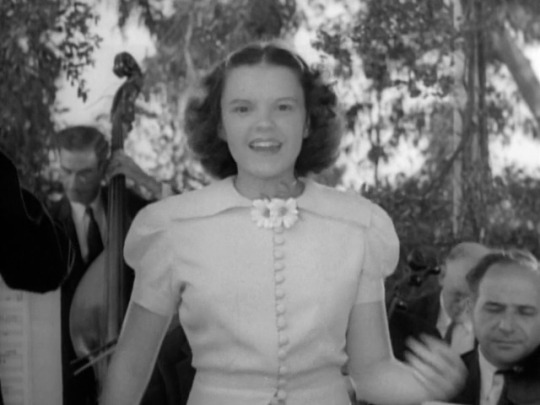
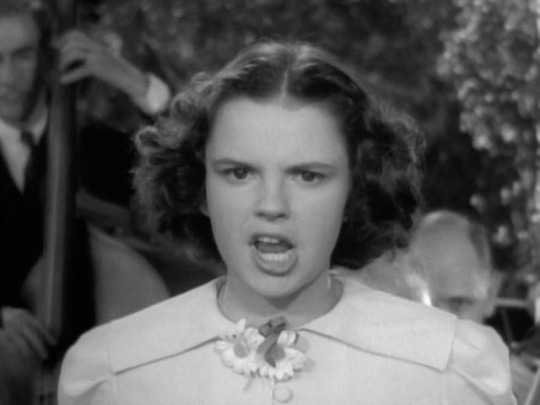
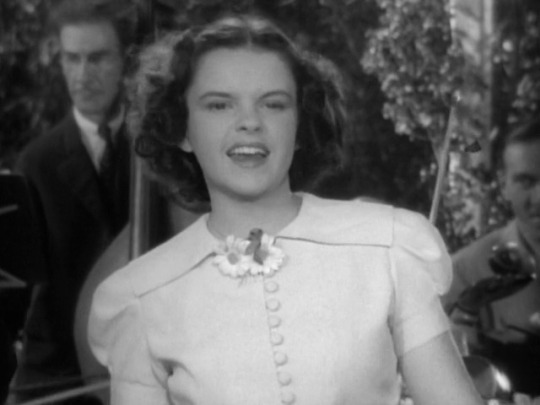
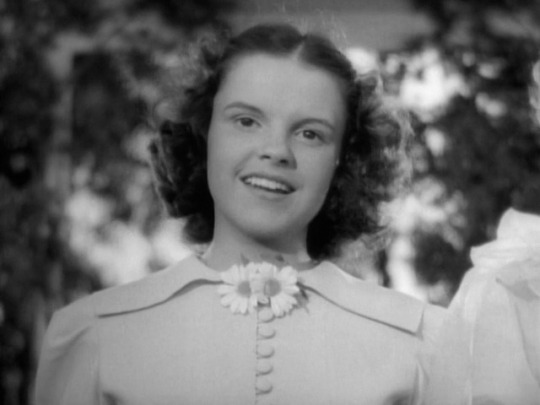
Judy Garland in Every Sunday (Felix E. Feist, 1936)
28 notes
·
View notes
Text
Shadows in Celluloid: The Forgotten Architects of Noir

There is a romance in remembering the forgotten—an ache in tracing shadows left behind on old celluloid. Film noir, that dusky genre of existential dread and fatalism, is often defined by names like Billy Wilder, Fritz Lang, and Orson Welles. But in the margins, far from the glamour of the marquee, a legion of rare and under-sung directors sculpted films as gritty, poetic, and resonant as any classic noir. Their works smolder with betrayal and desire, lit only by the flicker of a dying match in a rain-soaked alley. And though many of these filmmakers vanished into obscurity, their stories, and their shadows, remain.
John Brahm, a German émigré, brought a gothic sensibility to noir in The Lodger and Hangover Square, where madness oozed through gaslit London streets and fog curled around the minds of killers. His camera drifted like a ghost, gliding through interiors like haunted thoughts. One imagines, had Brahm lived longer in the realm of cinema instead of retreating into television, his work might have rivaled Hitchcock’s for psychological depth and stylized terror.
Anthony Mann, later known for his Westerns, cut his teeth on noir films that bristled with procedural rigor and moral ambiguity. T-Men and Raw Deal are brutal, kinetic visions of America’s underbelly—films where lawmen and criminals become mirrors of each other. His lost noirs crackle with tension, and one imagines a world in which Mann’s crime stories kept pace with his Western mythologies—where noir’s shadows marched alongside tumbleweeds.
Then there is Joseph H. Lewis, the maverick behind Gun Crazy—a fever dream of obsession and bullets. Lewis was a director of daring flourishes: a one-take bank robbery, a lover’s gaze twisted by the barrel of a gun. His noirs felt alive, nervous, urgent. He should have been a household name. Had the industry embraced his inventiveness, one can imagine him pushing noir into the territory later explored by the French New Wave.
Phil Karlson brought blue-collar rage and political subtext to his noirs. Kansas City Confidential and The Phenix City Story are sweaty, desperate, and charged with the pain of everyday corruption. His films are noir not of private eyes, but of the corner man, the boxer, the dockworker. In another timeline, Karlson might have become a bridge between noir and the gritty realism of 1970s cinema.
Byron Haskin, more remembered for The War of the Worlds, lent a sleek, dangerous elegance to noir in films like I Walk Alone. His women were venomous, his men wounded, and the world always a step from betrayal. Had Haskin stayed in the shadows of noir instead of the spectacles of sci-fi, we might remember him for helping chart noir’s transition into technicolor thrillers.
Felix E. Feist and Hugo Fregonese, both craftsmen of tight, anxiety-ridden thrillers, understood the power of claustrophobia and fleeting morality. The Devil Thumbs a Ride is a grimy gem of dread, while Black Tuesday captures the inescapable doom of violence with chilling precision. Their names are rarely spoken today, but their films still pulse with life in midnight screenings and cinephile corners.
Abraham Polonsky, with Force of Evil, gifted noir with something rare: poetry. His dialogue sang with fatalism, his camera drifted through a capitalist nightmare. Blacklisted and silenced, Polonsky’s voice might have elevated noir into a full-blown philosophical cinema, had he been allowed to speak.
Across the sea, the shadows deepened. Noir was not just American—it was universal.
In France, Jean-Pierre Melville emerged as a stoic poet of silence and death. His Le Samouraï (1967) was the logical conclusion of noir minimalism: a lone hitman, a raincoat, a bird in a cage. Melville's noirs were existential meditations, each frame a meditation on loneliness. Had he lived longer, he might have fully merged noir with Zen—an art of nothingness.
Julien Duvivier, with Pépé le Moko (1937), gave noir its template before Hollywood even named it. The film's Algiers is a romantic prison of passion and exile. Duvivier’s characters, steeped in doom, whisper to the doomed Americans who came later. And yet, he remains a side note in English-speaking retrospectives.
From Japan, Seijun Suzuki turned noir into pop art hallucination. Branded to Kill (1967) is a riot of surrealism and ultra-violence—a noir where logic dissolves into dream. Dismissed by his own studio, Suzuki’s wild vision was decades ahead of its time, influencing everyone from Tarantino to Jarmusch. Had the industry nurtured him instead of exiling him, noir might have mutated into something even stranger, even more sublime.
In Italy, Fernando Di Leo dragged noir through the mud of postwar Europe. His Milieu Trilogy (Caliber 9, The Italian Connection) is ruthless, kinetic, and soaked in moral rot. Di Leo’s films connect noir to organized crime in a visceral way—gangland operas of betrayal. Though largely overlooked outside cult circles, his work predicts the crime sagas of Scorsese and Ferrara.
Even in Argentina, noir found a home in Carlos Hugo Christensen, who crafted sultry, expressionistic thrillers like Si Muero antes de despertar (1952). His films are steeped in shadows and Catholic guilt, children haunted by secrets. Christensen, like so many, remains known only to archivists and historians, but his images are as potent as anything from Los Angeles or Paris.
These directors—forgotten or barely remembered—were not anomalies, but essential strands in noir’s DNA. They brought to the genre something rare: sincerity, desperation, regional nuance. Their films often lacked the budgets or prestige of Hollywood legends, but they bled with risk, style, and personal obsessions. They came from everywhere: Berlin, Buenos Aires, Tokyo, Ohio. And they dreamed in chiaroscuro.
Today, in the age of endless reboots and algorithmic content, their names are still hard to find. Yet their shadows remain. You see Lewis in the fever-dream pacing of Drive, Melville in the quiet tension of No Country for Old Men, Polonsky in every crime film that dares ask about capitalism. They live on in the grain of restored prints, in the whispered awe of late-night cinephiles, in the flicker of monochrome against a black bedroom wall.
If they had lived longer, been better funded, or more widely seen, perhaps the noir canon would look very different. Perhaps it would be darker, sadder, bolder. But even in absence, they haunt us—like the best noir figures do—not as victims, but as ghosts, walking forever through alleyways of smoke and broken neon, where every shot is a question, and every cut a wound.
0 notes
Text
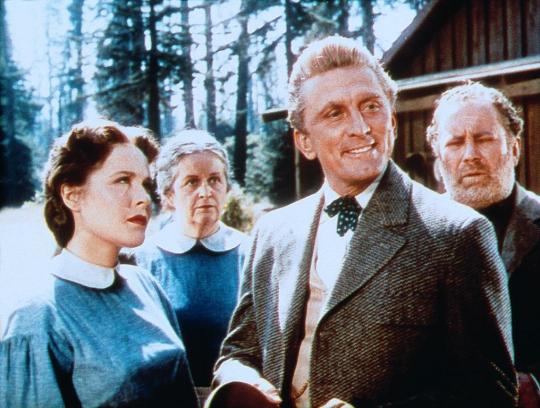
Eve Miller-Kirk Douglas "La ley de la fuerza" (The big trees) 1952, de Felix E. Feist.
8 notes
·
View notes
Text

This Woman Is Dangerous, US lobby card #7. 1952
6 notes
·
View notes
Text
Le ciné-club du Dix vins blog - Western -La vallée des géants -Felix Feist (1952)
“La Vallée des Géants” (1952), réalisé par Felix E. Feist, est western américain au scénario plutôt original qui met en vedette Kirk Douglas et Virginia Mayo. Tourné en Californie dans les forêts de séquoias, ces arbres majestueux et hors norme (d’où le titre) le film se distingue par ses paysages impressionnants et ses scènes d’action épiques. L’histoire suit le personnage de Jim Fallon (Kirk…
0 notes
Text
The Best Films I First Viewed in 2024
Rated 8/10: 90. Jerry and Jumbo (William Hanna, Joseph Barbera, 1953) 89. Bogart: Here’s Looking at You, Kid (Chris Hunt, 1997) 88. Sunkist Stars at Palm Springs (Roy Rowland, 1936) 87. Crazy House ([Jack Cummings], 1930) 86. My Grandfather’s Clock (Felix E. Feist, 1934) 85. Billy Rose’s Jumbo (Charles Walters, 1962) 84. Billy Rose’s Casa Mañana Revue (George Sidney, 1938) 83. Matthew Hopkins:…
0 notes